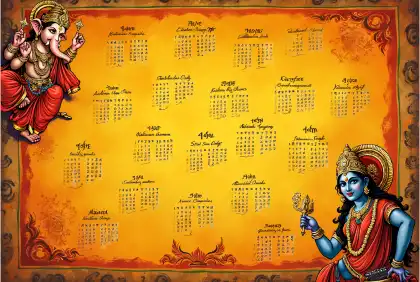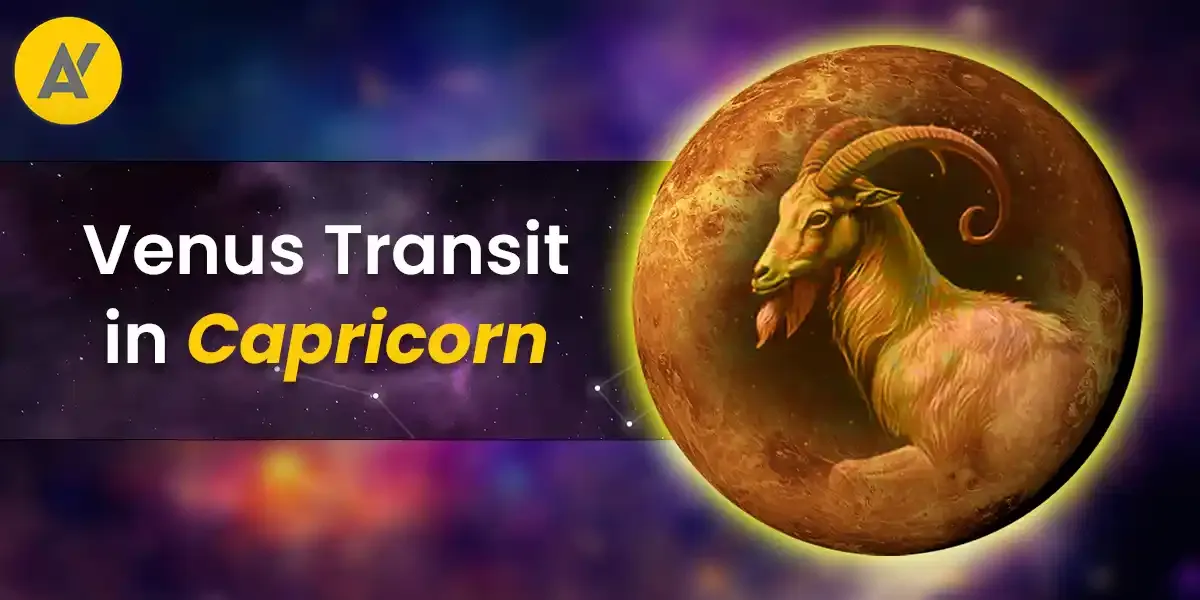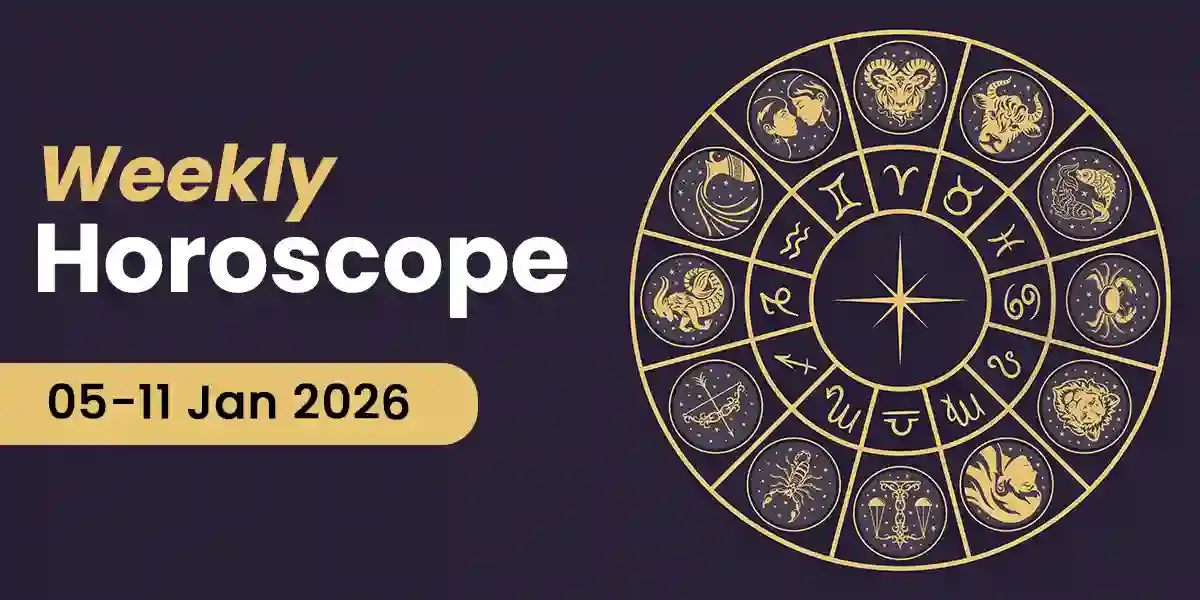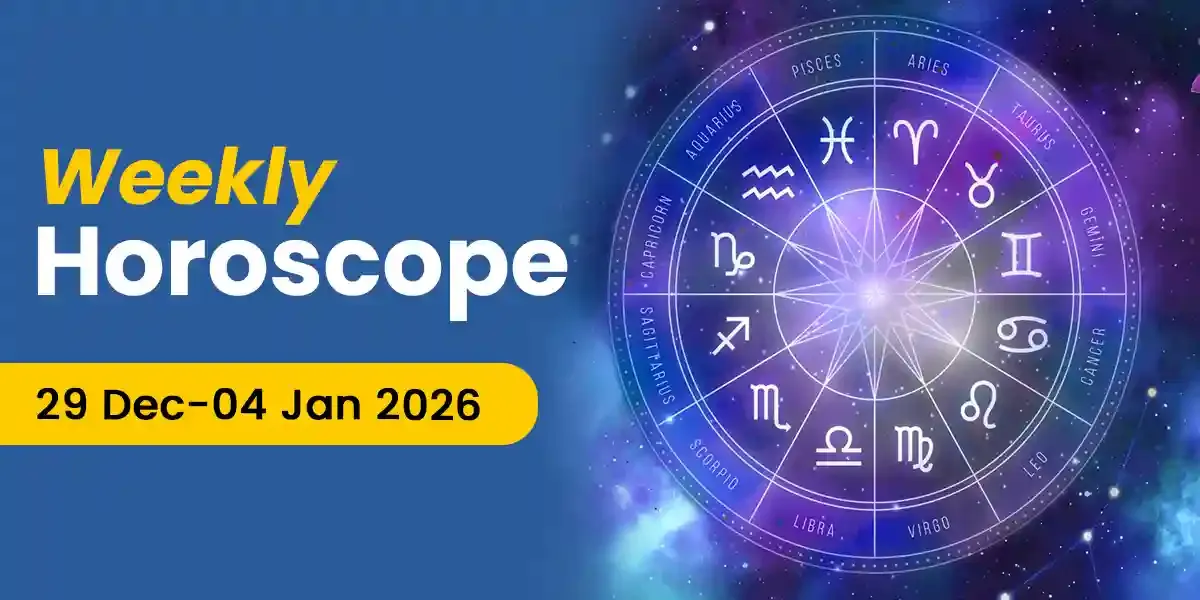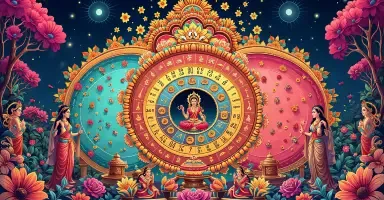
Nakshatra
According to Vedic Astrology, the zodiac comprises of 360 degrees. Since there are 27 Nakshatras (constellations) in it, the value of each constellation is 13º and 20 minutes when measured from the fixed initial point. Further, each Nakshatra is also divided into padas or charan, and every Nakshatra has 4 padas.


Ujjain, Tuesday, 06 January 2026
| Nakshatra - Ashlesha till 12:19:54 PM After That Magha |
Importance of Nakshatras in Panchang
As per the Hindu mythology, the twenty-seven Nakshatras are believed to be the daughter of King Daksha and Moon is married to all of them. This is why the lunar month is of approximately 27 days (equal to the number of Nakshatras) as the Moon spends approximately one day in each constellation.
The term "Nakshatra," translates into 'Sky Map': 'Naks' meaning 'sky' and 'Shetra' meaning 'region'. Astrologers also deduce another translation: 'Naksha' meaning 'map' and 'Tara' meaning 'star' and so Nakshatra means 'Star Map'.
The Nakshatras have been classified in various ways; according to their basic attributes, their astronomical names and categories, the deity that rules them, their ruling planet and starting Dasha, their gender and cast. An important classification that many astrologers keep in mind while analyzing, is the primary motivation of the Nakshatra. This includes Kama; which represents sensual desires, Artha; which represents material desires, Dharma; which represents living one's life based on spiritual principles, and lastly, Moksha; which represents liberation from birth and death.
List of 27 Nakshatras with Their Meanings and Deities-
| Nakshatra | Ruled by Planet | Description |
|---|---|---|
| Ashwini | Ketu | It is believed that this Nakshatra is ruled by the deity Ashwini brothers. |
| Bharani | Venus | It is believed that this Nakshatra is ruled by the deity Yama, the god of death and dharma. |
| Krittika | Sun | It is believed that this Nakshatra is ruled by the deity Agni, the god of fire. |
| Rohini | Moon | It is believed that this Nakshatra is ruled by the deity Prajapati (Brahma), the creator. |
| Mrigashira | Mars | It is believed that this Nakshatra is ruled by the deity Soma, the Moon god. |
| Ardra | Rahu | It is believed that this Nakshatra is ruled by the deity Rudra, the storm god. |
| Punarvasu | Jupiter | It is believed that this Nakshatra is ruled by the deity Aditi, mother of gods. |
| Pushya | Saturn | It is believed that this Nakshatra is ruled by the deity Brihaspati, guru of the gods. |
| Ashlesha | Mercury | It is believed that this Nakshatra is ruled by the deity Nagas, serpent beings. |
| Magha | Ketu | It is believed that this Nakshatra is ruled by the Pitris, the ancestral fathers. |
| Purva Phalguni | Venus | It is believed that this Nakshatra is ruled by the deity Bhaga, god of prosperity. |
| Uttara Phalguni | Sun | It is believed that this Nakshatra is ruled by the deity Aryaman, god of contracts. |
| Hasta | Moon | It is believed that this Nakshatra is ruled by the deity Savitar, the sun god of skill. |
| Chitra | Mars | It is believed that this Nakshatra is ruled by the deity Vishvakarma, the divine architect. |
| Swati | Rahu | It is believed that this Nakshatra is ruled by the deity Vayu, the wind god. |
| Vishakha | Jupiter | It is believed that this Nakshatra is ruled by the deities Indra and Agni, thunder and fire gods. |
| Anuradha | Saturn | It is believed that this Nakshatra is ruled by the deity Mitra, god of friendship. |
| Jyeshtha | Mercury | It is believed that this Nakshatra is ruled by the deity Indra, king of the gods. |
| Mula | Ketu | It is believed that this Nakshatra is ruled by the deity Nirriti, goddess of dissolution. |
| Purva Ashadha | Venus | It is believed that this Nakshatra is ruled by the deity Apah (Varuna), water deity. |
| Uttara Ashadha | Sun | It is believed that this Nakshatra is ruled by the Vishvadevas, the universal gods. |
| Shravana | Moon | It is believed that this Nakshatra is ruled by the deity Vishnu, the preserver and listener. |
| Dhanishta | Mars | It is believed that this Nakshatra is ruled by the Ashta Vasus, elemental gods. |
| Shatabhisha | Rahu | It is believed that this Nakshatra is ruled by the deity Varuna, god of cosmic waters. |
| Purva Bhadrapada | Jupiter | It is believed that this Nakshatra is ruled by the deity Aja Ekapada, the one-footed goat deity. |
| Uttara Bhadrapada | Saturn | It is believed that this Nakshatra is ruled by the deity Ahirbudhnya, serpent of the deep. |
| Revati | Mercury | It is believed that this Nakshatra is ruled by the deity Pushan, protector of journeys. |
Name of The 27 Nakshatras
- Ashwini Nakshatra
- Bharni Nakshatra
- Krittika Nakshatra
- Rohini Nakshatra
- Mrigashira Nakshatra
- Ardra Nakshatra
- Punarvasu Nakshatr
- Pushya Nakshatra
- Ashlesha Nakshatra
- Magha Nakshatra
- Mool Nakshatra
- Purva Phalguni Nakshatra
- Uttraphalguni Nakshatra
- Hast Nakshatra
- Chitra Nakshatra
- Swati Nakshatra
- Vishakha Nakshatra
- Anuradha Nakshatra
- Jyeshta Nakshatra
- Purvashada Nakshatra
- Uttrashadha Nakshatra
- Revati Nakshatra
- Shravana Nakshatra
- Dhanishta Nakshatra
- Shatabhisha Nakshatra
- Purvabhadrapad Nakshatra
- Uttrabhadrapad Nakshatra
Vedic astrologers also consider Nakshatras to be extremely significant during Kundli matching. Vedic astrologers prefer to analyse a person's personality traits through the birth star (Nakshatra of the Moon) rather than by the Sun sign. The Sun changes signs approximately every month, while the Moon changes its sign every 2-3 days. This is why predictions based on Moon are more accurate and more reliable, since our moods and circumstances are also frequently changing.
Nakshatras are stellar constellations and the word translates to "sky map". Nakshatras can be found with the help of the moons degree in a particular sign at the time of birth of a person. Vedic astrology focuses more on the birth star (Nakshatra of the Moon) than on Sun signs to read the personality traits of a person. The planet's Nakshatra positions are also studied in the natal chart thus making its use much more significant in Vedic astrology than in zodiac signs.












